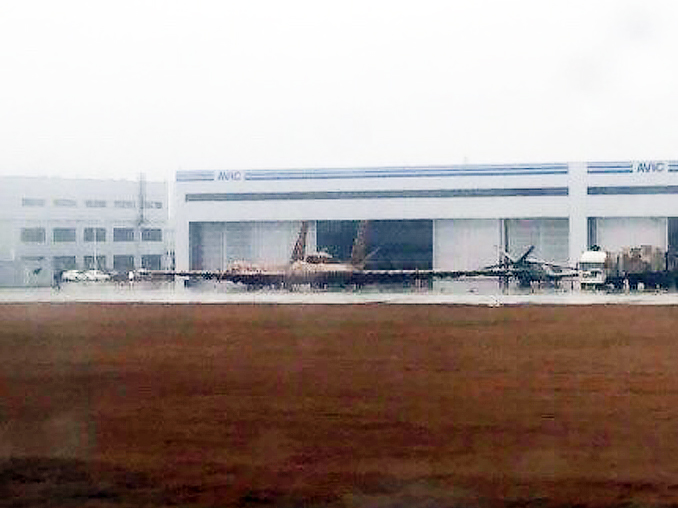Tracking Worldwide Losses Of Chinese-Made UAVs
Much has been written and discussed about the quality of Chinese-made unmanned aerial vehicles (UAVs). While some argue that Chinese drones have proven cost-effective alternatives to American UAVs, others have pointed out the drones' high crash rates and reliability issues when compared to their Israeli, U.S counterparts. Despite these issues, Chinese UAVs remain highly popular on the market today. This is likely not the least due to the fact that there are few strings attached to Chinese arms sales, enabling countries like the United Arab Emirates to deploy its Chinese-made UCAVs over areas where it wouldn't be allowed to operate its U.S.-produced drones.
One could further argue that the apparent low acquisition costs of Chinese UAVs make them an ideal choice for countries on a budget. Conversely, the price of some Chinese UCAVs actually approach or in some cases even exceed those of their Western counterparts. To give just one example, the acquisition costs of a single Wing Loong II UCAV is believed to be around 15 million USD for an international customer, roughly three times the price of a Turkish Bayraktar TB2. Additionally, trading in reliability for a low acquisition price could ultimately prove more expensive than acquiring a reliable unmanned aerial platform from the get go.
If the reliability of the Wing Loong II and TB2 were exactly the same, then a Wing Loong II costs around three times as much as a TB2. But if we assume, for the sake of argument, that the reliability of the Wing Loong II is only half that of the TB2, it in effect becomes six times as expensive considering the costs of replacing losses. The crash rate of the TB2 is reported to be one every 30.000 flight hours, which ultimately translates to some 166 dollars per operating hour. [1] If the crash rate of the Wing Loong II is double that figure (one in every 15.000 flight hours), then we find the costs amount to 1000 dollars per hour. In other words, the total cost of ownership is not just the initial acquisition price, even when we're not considering operating costs.
Countries like Jordan ultimately had to find this out the hard way, offering its entire fleet of CH-4Bs UCAVs for sale less than two years after acquiring the drones. The same type fared little better in Iraq, with eight of its 20 CH-4Bs crashing within a timespan of just a few years while the twelve remaining examples are currently languishing in a hangar with a lack of spare parts. Elsewhere, Algeria lost three CH-4Bs to crashes in a matter of months, while countries like Nigeria, Morocco and Turkmenistan all purchased Turkish UCAVs after earlier acquiring Chinese-made UCAVs. Their sketchy service record suggests that after-sale support provided by the Chinese manufacturers leaves something to be desired.
It is nonetheless difficult to provide an accurate overview of Chinese-made drone losses, as countries like Turkmenistan are unlikely to ever announce losses of their (Chinese-made) UAVs. Similarly, drones that crashed in Saudi Arabia's desert regions are likely to have been long taken away before a lost civilian ever has the chance to photograph the wreckage. This means that many losses often go unnoticed. In one notable case, the wreckage of an Emirati Wing Loong I that crashed in Libya somewhere in 2019 or 2020 was only found in August 2021, and that only by pure accident. Suffice it to say that UAV losses are notoriously difficult to record even in active warzones.
This list aims to catalogue Chinese-made unmanned aerial vehicles (UAV) losses in service with their operators worldwide as best as possible. This list only includes visually confirmed losses or losses confirmed by authorities. Thus, the actual number of UAVs lost is significantly higher than what is recorded here. This list will be updated as new crashes and downings occur.
Losses by U(C)AV type:
CH-4B UCAV: 20
Wing Loong II UCAV: 7
Wing Loong I UCAV: 5
Sky-09P: 3
UV10CAM: 2
Chilong CL-4: 2
Chilong CL-11: 2
DB-2: 2
Sky-02A: 1
CH-3A UCAV: 1
CH-92A: 1
Harbin BZK-005: 1
Aisheng ASN-209: 1
Sea Cavalry SD-60: 1
Losses by operator (country):
Saudi Arabia: 12
United Arab Emirates: 12
Iraq: 8
North Korea: 5
Libya: 4
Algeria: 3
Sudan: 2
China: 2
Ethiopia: 1
Nigeria: 1
Myanmar: 1
Egypt: 1
Pakistan: 1
Losses by location (country):
Libya: 18
Yemen: 14
Iraq: 14
South Korea: 5
Algeria: 3
Sudan: 3
China: 1
Myanmar: 1
Nigeria: 1
Egypt: 1
Pakistan: 1
Cambodia: 1
United Arab Emirates (12 lost).
4 Wing Loong I: (1, 2020) (2, 2020) (3, 2020) (4, 2020)
6 Wing Loong II: (1, 2019) (2, 2019) (3, 2020) (4, 2020) (5, 2020) (6, 2020)
2 Wing Loong I: (1, 2016) (2, 2019)
Saudi Arabia (12 lost).
2 Wing Loong I: (1, 2019) (2, 2021)
1 Wing Loong II: (2, 2021)
9 CH-4B: (1, 2018) (2, 2018) (3, 2018) (4, 2019) (5, 2020) (6, 2020) (7, 2021) (8, 2021) (9, 2021)
Iraq (8 lost).
8 CH-4B: (1, 2, 3, 4, 5, 6, 7 and 8 between 2015 and 2020)
North Korea (5 lost).
2 UV10CAM: (1, 2014) (2, 2017)
3 Sky-09P: (1, 2013) (2, 2014) (3, 2014)
Libya (4 lost).
1 Sea Cavalry SD-60: (1, 2019)
2 Chilong CL-4: (1, 2019) (2, 2019)
1 Chilong CL-11: (1, 2019)
Algeria (3 lost).
3 CH-4B: (1, 2020) (2, 2020) (3, 2020)
Sudan (2 lost).
2 DB-2: (1, 2014) (2, 2016)
Ethiopia.
1 Chilong CL-11: (1, 2021)
Myanmar (1 lost)
1 Sky-02: (1, 2021)
Nigeria (1 lost)
1 CH-3A: (1, 2015)
Egypt (1 lost)
1 Aisheng ASN-209: (1, 2021)
Pakistan (1 lost)
1 Wing Loong I: (2, 2016)
China (2 lost)
1 Harbin BZK-005: (1, 2011)
1 CH-92A: (1, 2020)








defence-blog.com



